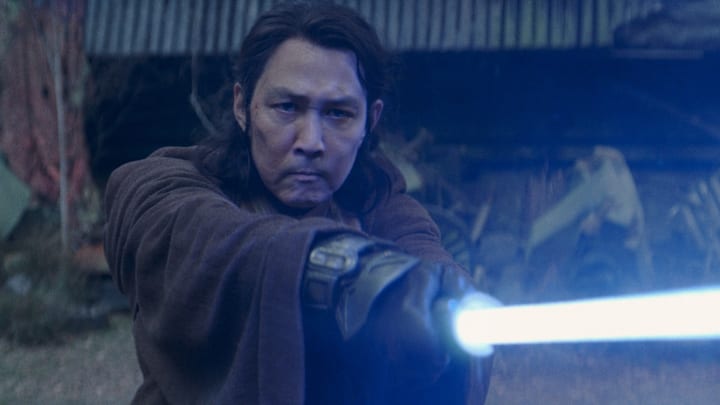I'm here to listen to all perspectives on The Acolyte as a Star Wars television show. In addition to being a great thing to follow while this Tolkien fangirl is waiting for the next season of The Rings of Power, The Acolyte was thought-provoking and exciting. I reforged friendships while obsessing over the identity of The Stranger, AKA Qimir, and enjoyed one friend's explorations of which Sith needed to be introduced for this all to work. It reminded me of the years I spent learning to love Marvel characters by watching every movie about those indomitable Avengers.
In the end, after writing twenty articles about one TV show and enjoying the journey along the way, I thought of how it would work as a movie. In fact, I thought that it needed not to be a movie but a trilogy of pre-prequels. Here are my thoughts on what would make that work for me.
8 episodes become three films
I've often said that storytelling can reflect the loss and restoration of the sacred, and I believe this could work for a movie version of The Acolyte. In the structure, we are introduced to what is sacred to each major player. We see the loss or desecration of that sacred idea or thing. Finally, we see what must be sacrificed to restore it. Many stories across literature, cinema, and television fit this structure. The fall and redemption of Anakin Skywalker is even one example.
Inthis trilogy, the will of the Force is held in high esteem by all of its users, even Qimir. He seeks freedom to act on it. The four Jedi who failed the witches and children at Brendok did what they thought was right according to their own interpretation of the will of the Force. The coven works according to their sometimes nebulous views of The Thread, but that is as central to their cult as the Force is to Master Sol.
The main characters still must be Mae and Osha. The catalyst is their separation, and one of the climaxes must be their reconciliation. Their journey would center around Mae's return to the light while Osha is led down the path of darkness.
I would absolutely leave the deaths of the four Brendok Jedi in the story. Their crimes and punishments are just too interesting. Similarly to the graphic novel V for Vendetta, their role in the tragedy would only be fully explained after being found guilty and being punished.
This is still not going to be a Star Wars project with smiling friends and perky celebration music. It will be different from the funeral procession, the building of the Death Star, and the separation of the Skywalker twins. As it happened in the series, there will be peace for some and tragedy for others, and the sacred that was lost at the beginning will not be restored.
Where do we go from here?
One of my first editors as a novelist told me that every chapter of a story should drive the plot toward the ending you already have in mind. For all the criticism lobbed at Leslye Headland's project, I think that overall, The Acolyte understood that principle pretty well. Here are some modest proposals on what else needs to be done for a more cohesive story.
Qimir and his evolution from a kowtowing, sheepish supplier to a cunning master is an essential part of this spiritual journey. His connection to Darth Plagueis should have been brought up earlier. If he is the one to train Osha in her anger and sense of injustice, we must have some sense of why he relates to her. Master Vernestra Rwoh should confess midway through the trilogy that one of her pupils turned to evil; this should help shape her involvement in the reclaiming of Mae and Osha.
Keep the peripheral Jedi as well. The stories of how the Jedi reckon with the guilt of their past is another important perspective. Yord Fandar and Jecki Lon were important reflections of the generation that followed the Jedi carrying the Brendok secret and should be part of how the Order moves forward.
Speaking of moving forward, Senator Rayencroft should be introduced earlier. If necessary, the issue of the external review of the Jedi and the popular perception of why the Jedi cannot continue in their current form should be at the forefront of many minds. It should be expanded to inform how and why the murder investigations are handled.
Leslye said the series explores how this era's decisions led to the Jedi Order that fell in the prequel trilogy. This doesn't have to be as step-by-step as the moments in Star Wars: Episodes I-III, where we learn the reason Leia went to Alderaan, how Obi-Wan Kenobi came to possess Luke Skywalker's lightsaber, or even that Jar Jar Binks was responsible for Palpatine having added tyrannical powers. Done well, this could help us understand the concessions and compromises that led to a more centralized Jedi Order.
Finally, with all of this in mind, we would need to discuss with the High Council why this is not the work of a Sith. Ki-Adi-Mundi's assertion that the Sith have been extinct for a millennium leaves too much unexplained.
Since I have neither the influence nor the budget to bring this to the big screen, I will continue to learn lessons from the journey Headland brought all of us on.
